Incorporating Natural Sounds in Urban Design.
In contemporary urban environments, the significance of natural sounds is frequently overshadowed by the pervasive noise associated with city life, highlighting the challenges posed by noise pollution. Nevertheless, these soothing auditory elements are essential in enhancing well-being and fostering harmonious spaces.
This article examines the importance of incorporating natural sounds into urban design, emphasizing their benefits, various types, and relevant examples. It further addresses practical strategies for implementation, as well as the challenges encountered in this endeavor, showcasing successful projects that have embraced the beauty of nature’s auditory landscape.
What Are Natural Sounds?
.jpg_00.jpeg)
Natural sounds are defined as auditory experiences that originate from nature, including a variety of sounds such as the rustling of leaves, the chirping of birds, flowing water, and the calls of wildlife, all contributing to the acoustic environment.
In urban settings, these natural sounds can significantly enhance the sensory experience of public spaces, contribute to urban biodiversity, and promote community well-being, reflecting principles of environmental psychology.
By incorporating natural sounds into urban planning and design, it is possible to cultivate a deeper connection between humans and nature, improve mental health, and create tranquil environments that harmonize with the surrounding ecological soundscape, fostering a sense of place within urban soundscapes.
Why Are Natural Sounds Important in Urban Design?
Natural sounds play a critical role in urban design, as they greatly enhance the quality of life in urban environments by providing a counterbalance to the challenges of sound pollution and urban noise, contributing to the overall goal of urban noise mitigation.
By integrating elements of acoustic ecology and landscape architecture into urban planning, designers can develop spaces that not only reduce noise but also improve sound quality through the incorporation of natural sounds. This deliberate approach to environmental design encourages community engagement and fosters a sense of place attachment among residents, ultimately resulting in healthier and more resilient urban habitats.
What Are the Benefits of Incorporating Natural Sounds in Urban Design?
Incorporating natural sounds into urban design presents numerous advantages that significantly enhance the quality of life for urban residents. These advantages encompass improved mental health through sound therapy, increased resilience against noise pollution, and the promotion of community well-being through immersive auditory experiences.
The integration of natural sounds can establish restorative environments that encourage social interaction and community engagement, thereby making public spaces more inviting and enjoyable for all, supporting the principles of participatory design and cultural identity.
By introducing elements such as water features, birdsong, and the rustling of leaves into the urban landscape, cities can craft tranquil retreats that alleviate the stressors typical of bustling environments. This infusion of nature not only supports mental health by providing soothing auditory landscapes but also enhances urban resilience by mitigating the adverse impacts of artificial noise.
These immersive experiences foster a sense of belonging and promote social interactions among community members, as shared spaces become more conducive to gatherings and leisure activities. Ultimately, such a thoughtful integration of natural sounds contributes to a healthier and more connected urban ecosystem.
What Are the Different Types of Natural Sounds?
Natural sounds comprise a diverse array of auditory experiences that can be classified into several categories, each contributing uniquely to the overall soundscape of an environment.
These categories include landscape sounds such as the rustling of wind through trees, the flowing of water in streams, bird calls, and the ambient sounds of wildlife.
In urban contexts, recognizing these distinct types of natural sounds is vital for effective ecological sound design, as they inform the planning of urban soundscapes that enhance biodiversity and foster a harmonious coexistence between nature and urban life.
How Do Natural Sounds Affect Our Well-being?
Natural sounds have a significant impact on well-being, positively influencing mental health and emotional states. Research has demonstrated that exposure to these sounds can lead to reduced stress levels and improved mood, functioning as a form of sound therapy that enhances overall community well-being.
By integrating these calming auditory experiences into urban environments, it is possible to create spaces that promote relaxation, encourage immersion in nature, and foster a sustainable connection to the surrounding environment.
Such sounds include:
- the gentle rustling of leaves
- the rhythmic flow of water
- the melodic chirping of birds
Each serving as a soothing remedy for the fatigued mind. Engaging with these natural soundscapes has been shown to evoke feelings of tranquility and contentment, making them vital components of holistic wellness practices.
Communities that incorporate elements of sound therapy from nature are likely to cultivate a heightened sense of togetherness and resilience, transforming ordinary outdoor settings into therapeutic retreats that support both individual and collective mental health.
What Are Some Examples of Natural Sounds in Urban Design?
Natural sounds in urban design can be observed in various public spaces, where the thoughtful integration of auditory elements enhances the urban soundscape. For example, urban parks may incorporate flowing water from fountains or streams, while green spaces feature the subtle sounds of wind rustling through leaves and birds singing.
These design elements not only elevate the sensory experience of urban environments but also foster a healthier relationship between communities and their surroundings.
The gentle hum of bees pollinating flowers in community gardens adds a vibrancy that connects residents more closely to nature. In busy city plazas, the ambient sounds of laughter and conversation blend harmoniously with the rustling of trees, creating an inviting atmosphere.
Furthermore, the strategic placement of seating areas near water features captures the soothing sounds of trickling water while encouraging social interaction, facilitating connections among neighbors in a more relaxed setting.
By incorporating these natural soundscapes, urban planners actively promote community well-being, creating spaces that support both mental health and social cohesion.
How Can Natural Sounds Be Incorporated in Urban Design?
.jpg_01.jpeg)
Incorporating natural sounds into urban design necessitates a strategic approach that emphasizes the integration of sound within the comprehensive framework of environmental design.
By accounting for the distinctive characteristics of urban ecosystems, designers can develop spaces that prioritize sound quality and diversity through a variety of methods, thereby enhancing the auditory experience for residents and visitors.
Effective strategies may include:
- the implementation of water features,
- the incorporation of plants and trees,
- the establishment of tranquil areas,
all of which can significantly enrich the overall sound environment of urban settings.
1. Using Water Features
Water features, including fountains, ponds, and streams, serve as effective instruments for integrating natural sounds into urban design, thereby creating soothing auditory experiences that enhance the tranquility of public spaces.
By incorporating these elements into urban landscapes, planners not only elevate the aesthetic appeal but also foster interactions among community members. These features act as gathering points, inviting individuals and families to engage with nature amid the busyness of city life.
The presence of water has been shown to reduce stress levels, as research indicates that natural sounds have a positive impact on mood and overall well-being. Consequently, water features can play a pivotal role in redefining sound integration strategies within bustling environments, making these spaces both serene and welcoming for all who visit.
2. Incorporating Plants and Trees
Incorporating plants and trees into urban design not only enhances the aesthetic appeal of urban spaces but also contributes to the auditory environment by introducing a diverse array of natural sounds. The rustling of leaves, the chirping of birds, and the subtle sounds of wildlife create a rich tapestry of soundscapes that promote biophilic design and foster an environment conducive to mental health and communal well-being.
This integration of urban greenery supports biodiversity while enhancing the overall sustainability of urban areas.
The strategic placement of greenery can effectively mask the disruptive sounds often associated with urban life, such as traffic and construction noise. By creating pockets of tranquility, these natural elements provide refuge for local wildlife and encourage residents and visitors to engage with their surroundings in more meaningful ways.
The symphony produced by urban flora enriches the experience of public spaces, thereby fostering a closer connection between individuals and nature.
Such thoughtful design choices can lead to healthier and more vibrant communities that prioritize both ecological health and social interaction.
3. Creating Quiet Spaces
Creating quiet spaces within urban environments is essential for enhancing auditory experiences and promoting mental well-being. These serene areas, specifically designed to mitigate noise pollution, enable residents to engage with natural sounds, thereby fostering restorative environments that encourage relaxation and reflection.
Through careful planning of quiet zones in public parks and community spaces, urban designers can significantly enhance the overall acoustic environment, contributing positively to the quality of life in urban settings.
Such meticulously curated locations not only provide a refuge from the hustle and bustle of city life but also facilitate opportunities for community engagement. By incorporating elements such as lush gardens, tranquil water features, and comfortable seating areas, these quiet spaces transform into havens for social interaction, mindfulness practices, and sound therapy.
Regular interaction with nature offers numerous psychological benefits, including reduced stress and anxiety, while promoting overall happiness. Additionally, these areas can encourage healthier lifestyles by supporting activities such as yoga, meditation, and leisurely walks, thereby fostering a more connected and harmonious urban community through the principles of environmental psychology.
4. Designing for Sound Absorption
Designing for sound absorption is a critical strategy in urban design that improves the sound quality of natural acoustics while effectively mitigating noise pollution.
The importance of this approach lies in its capacity to transform the way individuals experience their environments, particularly in densely populated urban areas where intrusive noise can diminish the overall quality of life and sensory experiences.
By incorporating sound-absorbing features such as specialized vegetation, water elements, and advanced building materials, urban planners can develop spaces that not only reduce decibel levels but also foster the presence of more agreeable acoustic elements, such as birdsong and the gentle rustle of wind, enhancing urban soundscapes.
This deliberate integration of acoustics into urban environments elevates noise mitigation from a mere objective to a comprehensive experience, promoting a deeper connection with nature, enhancing community cohesion through shared auditory landscapes, and supporting urban resilience.
What Are the Challenges of Incorporating Natural Sounds in Urban Design?
Incorporating natural sounds into urban design entails several challenges that necessitate careful consideration and innovative solutions in urban planning.
One of the primary obstacles encountered is the prevalence of noise pollution, which frequently obscures natural sounds and diminishes their effectiveness within urban environments.
Furthermore, spatial limitations in densely populated areas can restrict the capacity to create tranquil spaces and effectively integrate natural sound elements. Addressing these challenges is essential for achieving successful outcomes in sustainable urban planning and design.
1. Noise Pollution
.jpg_10.jpeg)
Noise pollution represents a significant challenge in urban design, which markedly obstructs the integration of natural sounds into public spaces. The pervasive nature of urban noise diminishes the sound quality of natural environments, complicating efforts to create areas that foster well-being and community engagement.
To effectively address this issue, urban planners must adopt strategies that prioritize noise reduction and enhance the auditory experience for residents.
This often necessitates innovative solutions, such as:
- the implementation of sound barriers,
- the creation of green spaces,
- the application of acoustic design principles within the layout of urban areas.
By intentionally designing environments that mitigate intrusive sounds, communities can cultivate a more harmonious relationship with their surroundings. The incorporation of water features, vegetation, and strategically placed gathering areas promotes soothing natural sounds, which can ultimately enhance mental health, facilitate social interaction, and support public health.
As urban planners integrate these strategies, the traditional noise associated with urban life can be effectively balanced, thereby enriching the overall quality of life, strengthening the community’s connection to nature, and supporting sustainable design practices.
2. Limited Space
Limited space in urban environments presents significant challenges to the effective integration of natural sounds into design. Urban planners often encounter constraints that restrict land availability for the creation of green spaces and serene areas conducive to the proliferation of natural sounds and urban biodiversity.
Addressing these limitations necessitates innovative solutions that optimize the use of available space while prioritizing the incorporation of natural sound elements in community environments.
This frequently requires a reevaluation of conventional design approaches and the implementation of vertical landscaping, rooftop gardens, and soundscaping techniques that enhance auditory experiences and support biodiversity corridors without requiring extensive physical footprints.
As urban areas become increasingly dense, the demand for thoughtfully designed public spaces becomes even more essential; these areas should not only fulfill recreational functions but also promote a sense of community and connection to nature.
By proactively addressing design challenges such as noise pollution and the scarcity of greenery, urban planners can create environments where natural sounds—such as rustling leaves and chirping birds—contribute to a healthier urban ecosystem and enhance the quality of life for residents.
3. Maintenance and Cost
Maintenance and cost considerations are essential factors in the effective integration of natural sounds into urban design. The ongoing upkeep of features that foster natural sounds, such as water elements and green spaces, can lead to significant expenses, which may discourage urban planners from pursuing these initiatives, despite their contribution to urban ecology.
However, investing in sustainable design approaches and community engagement can mitigate these costs and result in long-term benefits for urban environments, enhancing community well-being and ecological balance.
Urban landscapes frequently contend with noise pollution, which complicates the introduction of elements such as strategically placed trees, ponds, or gardens. The challenge lies in reconciling the environmental benefits of these installations with the financial implications associated with their maintenance.
Community involvement is critical in this process, as local residents can assist in the upkeep of these features while simultaneously fostering a sense of ownership.
Educational programs and volunteer opportunities not only help reduce costs but also strengthen the community’s connection to their environment.
Ultimately, the success of urban design that incorporates natural sounds depends on collective efforts that prioritize sustainability while addressing financial constraints.
What Are Some Successful Examples of Urban Design Incorporating Natural Sounds?
Numerous successful case studies illustrate the effective integration of natural sounds into urban design, highlighting the potential for enhancing urban soundscapes and fostering community engagement.
Initiatives such as urban parks with interactive sound installations, pedestrian zones characterized by abundant greenery, and cities that prioritize sound mapping have all significantly contributed to improved urban livability, the incorporation of natural sounds into daily life, and the promotion of biophilic design.
These examples exemplify the innovative strategies that urban planners and designers can implement to create harmonious environments.
1. The High Line in New York City
The High Line in New York City exemplifies urban design that skillfully incorporates natural sounds to enrich the urban experience. This elevated park showcases a distinctive blend of landscape architecture, where the sounds of wind rustling through vegetation and the distant chirping of birds create a calming atmosphere amidst the urban bustle. The High Line not only fosters community engagement but also exemplifies the successful integration of natural sounds within a dynamic urban context, enhancing city aesthetics and urban vibrancy.
As visitors traverse the path, they are enveloped in an auditory tapestry that reflects both the natural environment and the vibrancy of the city. Thoughtfully positioned water features, such as fountains and small pools, contribute to a tranquil ambiance, allowing the gentle sound of trickling water to alleviate the noise of surrounding traffic.
Community spaces integrated into the park encourage social interactions while providing moments of serenity, thereby establishing a harmonious balance between urban life and nature. These deliberate design elements not only enhance the visitor experience but also encourage residents to connect with their surroundings, positioning The High Line as a valued urban sanctuary.
2. The Singapore Botanic Gardens
The Singapore Botanic Gardens exemplifies exemplary urban design that effectively integrates natural sounds and biodiversity, thereby creating a serene and restorative environment, promoting environmental sustainability and urban renewal.
Within this extensive green space, the gentle sounds of flowing water, birdsong, and the rustling of leaves contribute to a tranquil auditory landscape that significantly enhances the visitor experience. This design not only promotes ecological restoration but also serves as a model for incorporating natural sounds into urban planning to foster community well-being.
By fostering a diverse range of habitats, the gardens support various wildlife species, thereby enriching urban biodiversity and promoting wildlife-friendly design. The meticulous placement of pathways and seating areas enables visitors to fully engage with the vibrant sights and soothing sounds of nature, encouraging mindfulness and relaxation.
Additionally, educational programs further strengthen the connection between community members and their environment, promoting an appreciation for nature’s role within urban contexts and enhancing environmental awareness.
The design of the gardens invites individuals to participate in conservation efforts, reinforcing the notion that nature and community can coexist harmoniously, ultimately leading to a healthier urban ecosystem for all. This illustrates principles of biophilic design and urban ecology, enhancing community well-being and urban biodiversity.
3. The Soundscape Park in Barcelona
.jpg_11.jpeg)
The Soundscape Park in Barcelona exemplifies an innovative approach to urban design that prioritizes the integration of natural sounds into the urban soundscape. This park is characterized by interactive sound installations and thoughtfully curated natural elements that create immersive experiences for visitors, enabling them to engage with their environment in meaningful ways. These experiences contribute to ecological balance and sound therapy, enhancing overall public health.
By merging artistic expression with natural sounds, the Soundscape Park fosters community engagement, promotes sensory experiences and enhances the overall quality of life within the city through ecological urbanism.
In this distinctive urban oasis, design principles rooted in landscape architecture are meticulously interwoven to cultivate a serene atmosphere that provides a stark contrast to the vibrant pace of city life. Visitors are encouraged to explore pathways adorned with native plants, complemented by tranquil water features that generate soothing sounds as they flow, enhancing stress reduction and relaxation.
The park’s layout promotes both individual reflection and communal gatherings, allowing individuals to experience the harmonious interplay between human creativity and the symphony of nature. It also serves as a platform for participatory design and cultural identity, reinforcing urban resilience through public spaces.
Consequently, the Soundscape Park not only functions as a sanctuary but also serves as a catalyst for social interaction and environmental awareness, fostering a deeper connection between residents and their urban environment. It contributes to urban renewal, promotes wildlife conservation, and supports biodiversity corridors, enriching urban living.
Frequently Asked Questions
What is natural sound in urban design, and how does it contribute to urban vibrancy?
Natural sound in urban design refers to the incorporation of sounds from nature, such as birds chirping, water flowing, or leaves rustling, into the design of urban areas. This can be achieved through the use of natural materials, landscaping, and architectural elements that enhance and amplify these sounds, contributing to the city’s sonic identity and acoustic environment.
Why is it important to incorporate natural sounds in urban design?
Incorporating natural sounds in urban design can have a positive impact on the overall well-being and livability of a city. These sounds have been shown to reduce stress, improve mental health, and provide a sense of tranquility in an otherwise noisy and bustling urban environment.
How can natural sounds be incorporated in urban design?
There are various ways to incorporate natural sounds in urban design, such as creating green spaces with trees and plants that attract birds and other wildlife, incorporating water features like fountains or ponds, and using natural materials in building design that can reflect and amplify natural sounds. These efforts improve sound quality and enhance urban habitats.
Are there any specific design techniques used to incorporate natural sounds?
Yes, there are specific design techniques that can be used to effectively incorporate natural sounds in urban design. These include the use of sound-absorbing materials, strategic placement of natural elements to maximize sound propagation, and the use of soundscaping techniques to create a harmonious blend of natural and urban sounds. Such techniques are part of eco-friendly design and urban sound mapping efforts.
What are the benefits of incorporating natural sounds in urban design, and how do they enhance urban experiences?
Incorporating natural sounds in urban design has numerous benefits, including creating a more livable and sustainable city, improving the physical and mental well-being of residents, and providing a sense of connection to nature in an urban environment. It enhances urban aesthetics and supports ecological balance.
Can incorporating natural sounds in urban design also benefit the environment?
Yes, incorporating natural sounds in urban design can also have a positive impact on the environment. By creating green spaces and using natural materials, it can help improve air quality, reduce noise pollution, and provide habitats for wildlife in urban areas. Such efforts encourage habitat restoration and promote biodiversity.

I’m Bruno, an architect with a deep passion for Biophilic Design in Urban Architecture. Throughout my career, I’ve focused on integrating natural elements into urban planning, and I created this site to share my insights and foster a deeper understanding of how biophilic principles can significantly enhance urban living. Dedicated to sustainable development, I continually explore innovative design solutions that promote both environmental and human well-being in city landscapes.



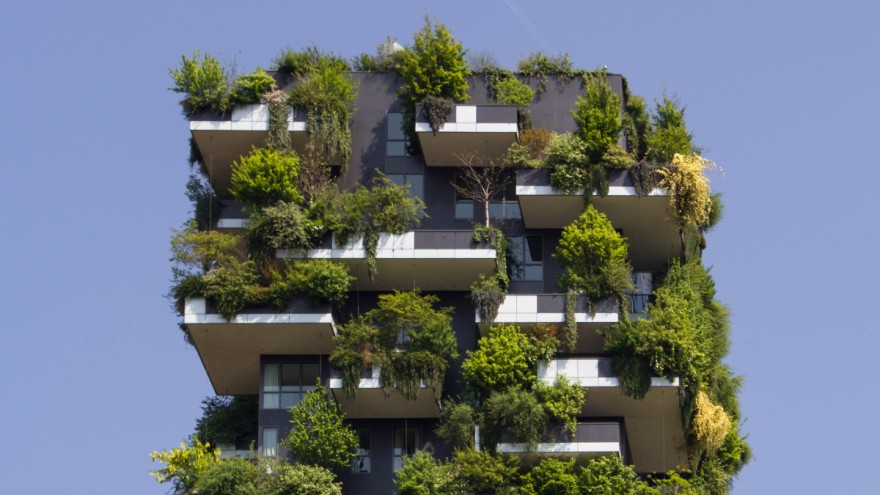
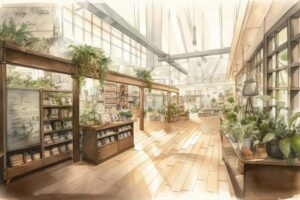

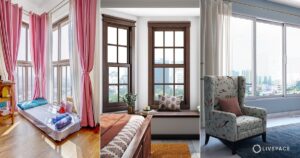
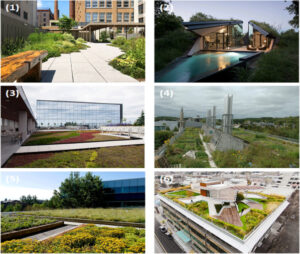
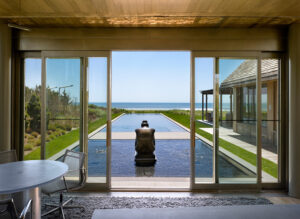
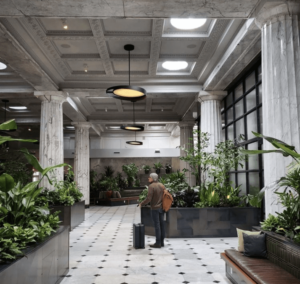


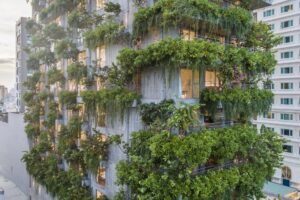
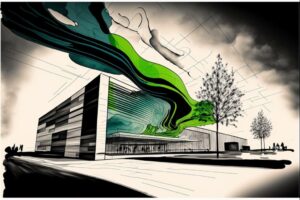
Publicar comentário